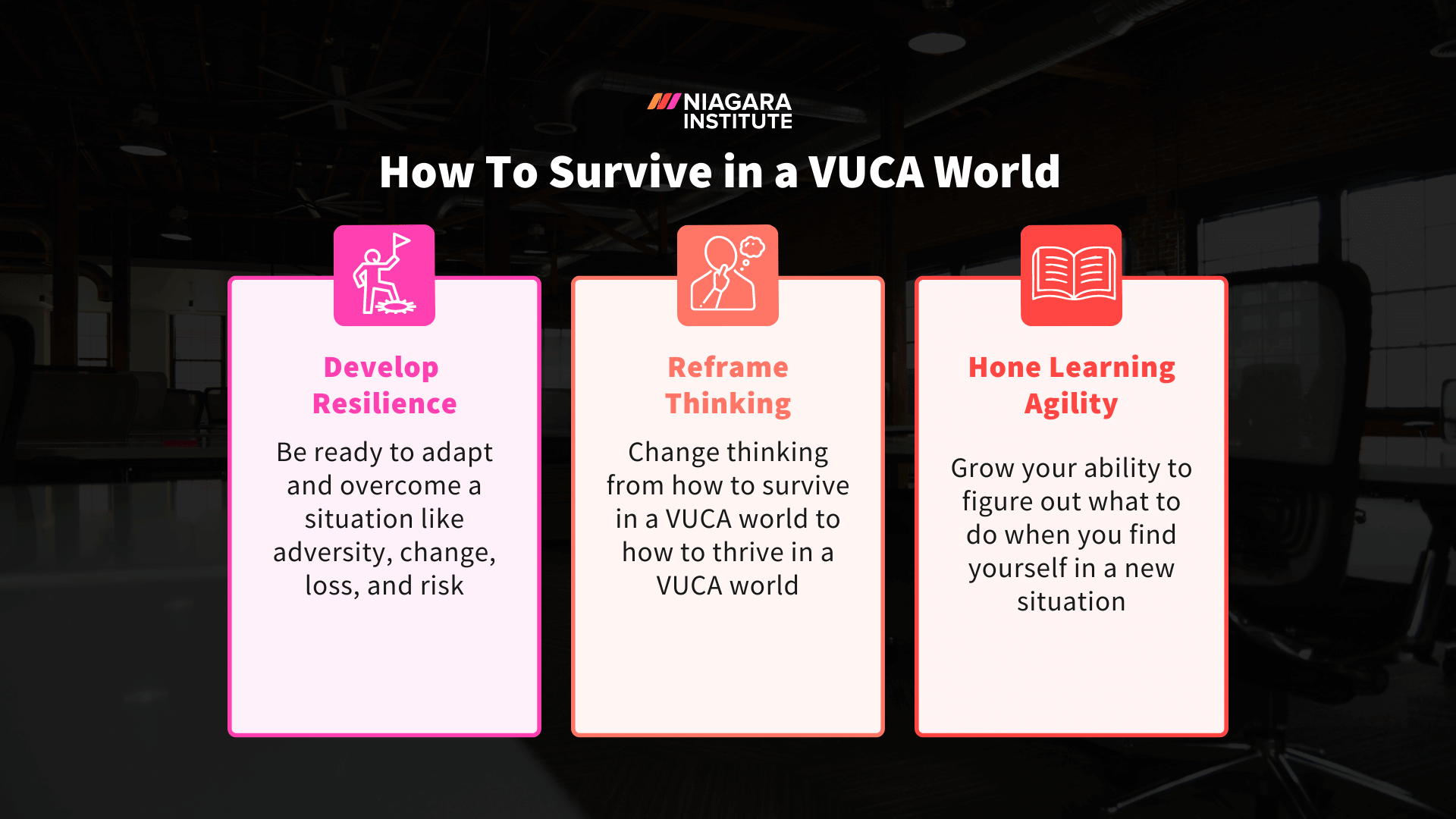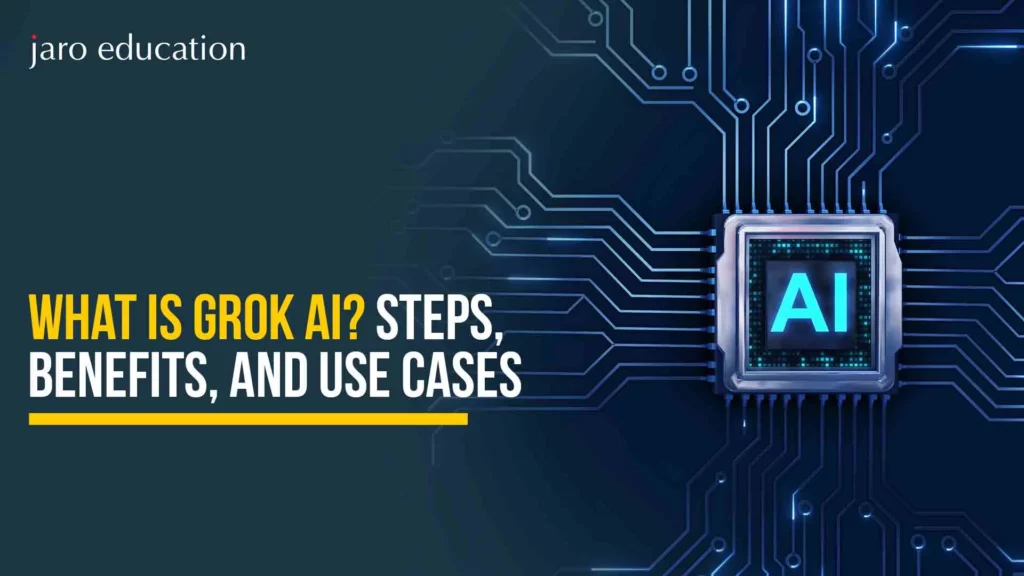How Does the VUCA World Prepare You for the Future?
Table of Contents

- jaro education
- 23, November 2024
- 11:00 am
Are you an aspiring manager looking forward to a positive leadership endeavour? Then, you should be aware of the term VUCA World.
Business realities nowadays can be defined with the popular VUCA world – Volatility, Uncertainty, Complexity, and Ambiguity. The U.S. Army War College first used VUCA to explain the changing nature of warfare and has found its usage in different disciplines, including business management. This is important for a leader and any organisation which hopes to survive in the contemporary world.
What is the VUCA World?
The VUCA framework consists of four parts: volatility, uncertainty, complexity, and ambiguity. These elements make situations hard to evaluate, anticipate, or control. Such characteristics are common to many dynamic or rapidly changing environments that challenge leaders. Understanding the VUCA world and knowing how to eradicate its adverse effects is beneficial in augmenting strategic thinking and decision-making for positive results. Each element of the VUCA world brings its own set of problems, which require different approaches.
Here’s what the elements of VUCA imply:
V = Volatility: Things change quickly and in unexpected ways.
U = Uncertainty: Things are hard to predict.
C = Complexity: Many things are connected, and it’s not clear how they affect each other.
A = Ambiguity: Things are unclear, and messages can be confusing.

*changeandstrategy.com
Importance of VUCA World
The VUCA framework equips firms with the resources to manage all forms of complex situations and enhance their capabilities.
1. Anticipation and Preparedness
By identifying the volatility and uncertainty in this 21st century, organisations can foresee their risks and weaknesses as well as the opportunities ahead of time. Such understanding helps the organisation to foretell change, make provisions for occurrence, and help to build the necessary elasticity for correct response, thus increasing their survivability.
2. Strategic Agility
VUCA framework encourages businesses to adopt flexible strategies, abandoning rigid plans to pivot quickly when circumstances change. This ability to respond and adapt appropriately to the environment is the defining characteristic of competitive organisation. It makes it possible for them to explore new opportunities while at the same time reducing the dangers that the risks of competition present.
3. Innovation and Creativity
In the VUCA world, assumptions by using traditional ways could be obsolete. This forces the organisations to devise clever ideas and new ways of doing things. The paradoxes of VUCA encourage risk-taking and entrepreneurship, which leads to the emergence of new ways of creating and capturing value and providing services or products.
4. Learning and Growth
Dealing with VUCA situations calls for unending learning and growth. There is a need for individuals and organisations to promote curiosity and enhance orientation within them. Through learning opportunities and the development of competencies, companies can cope with challenges presented by the VUCA framework and encourage healthy development, which is long-term.
5. Opportunity Recognition
VUCA environments are challenging, but they possess implicit opportunities to explore the unknown. Acknowledging ambiguity helps businesses to identify unrecognised tendencies, explore entrepreneurial diversity in existing markets, and even create new competitive market products. Vigilance and open-mindedness are essential for success in such conditions.
6. Global Perspective
In global environments marked by volatility, uncertainty, complexity and ambiguity, external factors, such as power relations or recessions, are significant. Organisations need to have a global outlook that allows for intercultural interaction, appreciation and integration of different cultures.
This approach guarantees the ability to adapt even in the face of extreme challenges and assists businesses in creating a viable future because they can reach out to various markets.
7. Informed Decision-Making
Decision-making becomes crucial due to uncertainty in the VUCA framework. To a degree of certainty, organisations use a mix of data analysis, option modelling, and foresight to breed confident choices in the chaos of uncertainty. Such an approach to management is constructive because it diminishes the chances of failure and increases possibilities to the fullest extent.
8. Continuous Adaptation
Instability is the best description of the VUCA framework; therefore, organisations have to be always ready for change. Companies bring in a culture of learning on the go through trial and error as well as further improving proactive measures to withstand changes in the market. Incorporating new systems and discarding the old ones makes one’s business relevant while also promoting creativity over time.
9. Collaborative Networks
Challenges in the VUCA world require the input of many people to solve them. Through strategic partnerships and collaborations, companies can utilise and improve each other’s weaknesses as well as resources to create and share profits. The networks of cooperation stimulate the development activities, new opportunities in the market and the strength of the system as a whole.
10. Ethical Leadership
In a VUCA world, it is crucial to emphasise ethical leadership. This is because leaders are expected to be honest, open, and accountable, more so in times of uncertainty. Integrity is one of the facets of leading as it builds the confidence of team members, helping make consistent decisions with the values of the organisation. It also helps navigate through ethical challenges with the team, and ultimately leads to positive image creation over time.

*niagarainstitute.com
Each Element of VUCA World
Analysing each aspect of the VUCA world is necessary for strategizing effectively. The table below provides a brief description of each of them:
| Element | Description |
|---|---|
| Volatility | Volatility is the tendency for sudden and many changes to happen at given periods, often with little or no warning. A lot of small reasons may alter the situation, leading to destabilising shocks.
For example, some markets are volatile such that the prices of goods vary sharply over a very short time span but with a sudden change of direction. |
| Uncertainty | Uncertainty means that there is no clear picture of certain events and their outcomes and provides explanations of relationships. The use of past occurrences and statistics is not helpful in the present case.
A good example is an uncertain market; it is hard to say whether prices will go up or down in addition to the extent of increase or decrease. |
| Complexity | Complexity exists when there are many factors at play in a given situation that are all connected. The connections between various elements are difficult, and any shift or alteration in one can lead to other shifts in areas not related.
For example, gas prices in a complex exchange may result in changes in the pricing of unrelated items. |
| Ambiguity | Ambiguity involves a lack of precision since it becomes hard to realise what is going on in the market. There is a possibility of information being distorted or misapprehended, and not all people may be aware of the desired results.
Some factors may remain hidden in cases of ambiguity, or the information available may be inadequate for understanding the forces affecting the market. Hence, businesses are usually kept in the dark about what is changing the situation. |
Learn How Jaro Education Helps for Leading in VUCA World
Jaro Education serves as a career supporter and counsellor, helping individuals bridge the gap in their educational journey by offering counselling to select the right course. It facilitates access to various degree programs like MBA and MCA.
Jaro collaborates with prestigious institutions like IITs and IIMs, acting as a service partner to deliver exclusive programs, with participants gaining access to Jaro Connect’s services.
As an online higher education and upskilling platform, Jaro Education distinguishes itself from traditional EdTech companies. It focuses on empowering learners through education rather than promoting courses based on the promise of salary hikes. It emphasises fact-based communication and realistic expectations, guiding learners toward professional growth and informed career decisions.
IIM Indore unveils the Corporate and Public Leadership in a VUCA World program as it seeks to address the issues of management in the corporate sector as well as the non-profit sector in relation to public leadership. This is not like the usual executive education courses which deal with organisational behaviour or human resource management. It’s an interactive course that touches on different fields of social science, such as psychology, political sociology, public administration and international relationships.
Programme Highlights
- Upon completion of the program, all the participants are awarded a valued certificate and exclusive alumni status by IIM Indore.
- The programme is designed to meet business leadership needs across both the private and public sectors.
- Participants seek leadership development through the application of such areas as psychology and public policy sociology and international relations, etc.
- Meet experienced faculty with excellent academic and professional credentials.
- The live sessions are interactive and promote mingling with both experts and fellow participants for effective learning.
- The curriculum has been created for employed individuals and thus incorporates the use of online classes held over the weekends or after regular working hours.
- The course revolves around case studies, where participants tackle real-life situations, challenges, and queries.
- The program also includes a three-day campus immersion at IIM Indore for classroom learning.
Final Thoughts
Organisations and leaders need to keep on understanding the VUCA world in a much more strategic way. Economists always face VUCA wars: volatility, uncertainty, complexity, and ambiguity. However, strategies have also been created to deal with this situation in business. Education is one. Jaro Education helps working individuals who want to fit into a VUCA environment. Finally, we believe that the VUCA framework will be an integral part of enabling creativity, quickness and enduring achievement in the future, where change is the only constant.
Frequently Asked Questions
Vuca refers to the volatility, uncertainty, complexity, and ambiguity that portray the characteristics of the market today.
Appreciating the impact of VUCA world helps organisations enhance the quality of strategic planning, transformation processes, risk management, leadership abilities, innovation, and overall organisational agility.
Examples include sudden market changes related to the economic conjuncture, sudden changes in the legal environment, or even the pace of growth within the industries.
Leaders can prepare by developing more flexible plans, conducting orientation planning, developing relevant strategies, and creating an encouraging environment among their followers.









